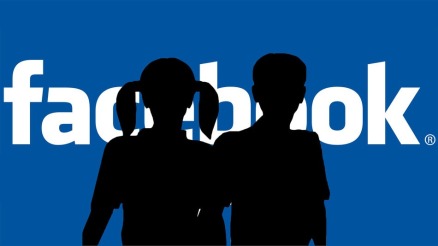
Andrea Ng, a 16 years old girl from Richmond, BC, uploaded a selfie she took while getting ready with her friends for a high school dance to Facebook. She didn’t think much of the photo at the time and had forgotten all about it until three years later, when it came back to haunt her. The whole ordeal started in May 2013 when Andrea’s friend sent her a link to a Facebook account that was using her name and the selfie, except the photo had been photoshopped to make it look like she was topless. And to make matters worse, the impostor was on a mission to add as many of her friends and family as possible. She called the police, but they said they couldn’t do anything about it. Andrea states, “I had high hopes that my local police department would take my case seriously and help me stop whoever it is that is trying to sabotage me. No action was taken. ‘Nothing could be done’ they said, over and over again.” A week later, Facebook took down the account. Andrea thought her worst nightmare was over. Sadly it wasn’t. On February 1, 2015, Andrea received a devastating message from a friend saying the photo had resurfaced on Tumblr and has been reblogged over 1,000 times. She reported the photo and thankfully Tumblr took it down. Her relief this time was short lived. On April 19, Andrea received a call from her boyfriend while she was at work telling her the topless photo had made its way onto Twitter. Her stalker had created a Twitter account with her name and was following her colleagues and the companies she had been applying to for internships. Andrea was in full panic mode and contacted the police once again. She explained everything to the officer and had high expectations they would help her because it was an ongoing situation. Surprisingly, the officer told her there was nothing she can do. The officer said she felt the person doing this to Andrea was not from Vancouver, even though Andrea said she had a strong feeling it was someone from Vancouver and to be more specific it was someone she knew. Andrea asked the officer, “What about Amanda Todd (a 15 year old girl who had committed suicide after being cyberbullied), the police were able to track her harasser all the way to Europe.” The police officer said, “Well, I have confidence that you would not harm yourself because of this situation, and unless this situation becomes more serious I will then put more resources towards this case.” Once again the police were useless. On April 23, Twitter suspended the account.
After consistently being let down by the police, Andrea decided to take matters into her own hands. She created a blog titled “Cyber Bullying – My Story” detailing her entire experience. She wanted to tell the world the truth about her photo. She states, “Now, the person can no longer spread the image, because the truth is out there, they would just look dumb. I had to say something about it. Then, maybe, this person can no longer hurt me.” She was right because her stalker has finally stopped circulating the photo. Andrea explains, “I feel like I’m in control of my life, that this person can no longer hurt my feelings.” She also says she would still like to find out who the person is, but hasn’t heard anything further from the police. In an interview with Vice, Andrea says she has heard from many other women who are also being cyberstalked, and even though she says she hasn’t received help from police, she still tells others to call them. She states, “Maybe the more cases they get, the more they will see how serious and widespread this issue is and deal with it. In the meantime, if people need help, they can contact me. I’ve got their back.” Andrea tells Vancity Buzz that by sharing her story on her blog, she wants people to take something away from her five year long ordeal. “The only thing I can really say is be smart about using social media. Social media is a love/hate relationship, and I would have never thought I would be a victim of cyberbullying.”





 Google’s phenomenal story started in a garage in California, with no one knowing it would grow to become the largest network in the world. When it comes to competition for search engine traffic, Google has plenty of competition. Surprisingly, Google executive Eric Schmidt worries more about Amazon than Bing or Yahoo. Schmidt
Google’s phenomenal story started in a garage in California, with no one knowing it would grow to become the largest network in the world. When it comes to competition for search engine traffic, Google has plenty of competition. Surprisingly, Google executive Eric Schmidt worries more about Amazon than Bing or Yahoo. Schmidt 


